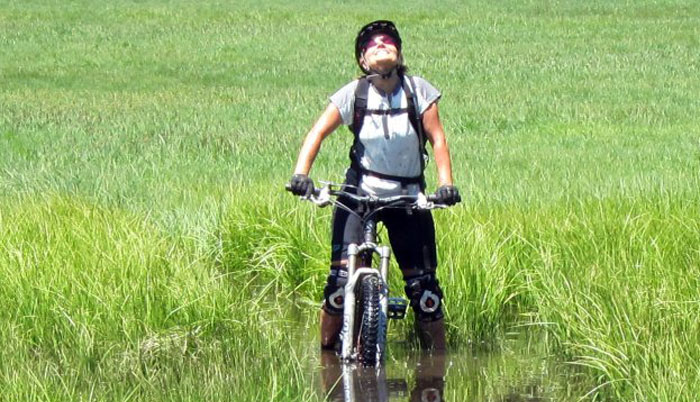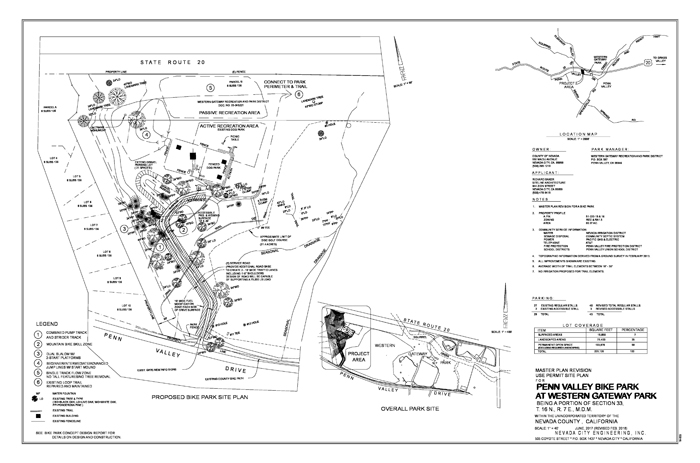- Tahoe’s Nevada Beach Tops the List of Hard-to-Book Campgrounds - 07/17/2024
- Cannabis Watershed Protection Program Cleans Up Illegal Grow Sites - 07/10/2024
- French Fire - 07/05/2024
America’s top stage race enters post-Lance years as big as ever
By Pete Gauvin • Photos by Doug Pensinger
This year’s Amgen Tour of California may be the most intriguing course in the event’s six-year history. It begins in Tahoe, completes a full loop and a half of the lake, spilling across a state line for the first time into Nevada, like the Tour de France often does into the Swiss Alps or the Spanish Pyrenees.
Indeed, like a brash, upstart American racer, the Tour of California has grown into the international showcase for California and pro cycling that race promoters always thought it could be.
It’s now established itself on the cycling calendar in May near the head of the peloton of elite races even amid the Euro classics. In fact, the eight-day race is the only American race listed on the international professional cycling calendar and takes place right in the middle of Giro d’Italia (May 7-29).
“This is an exciting year for the Amgen Tour of California,” says Andrew Messick, president of AEG Sports. “We have a great route that is the most challenging to date and we have the biggest field of teams ever assembled in the race’s history, so we couldn’t be more pleased about this year. Each year it gets more difficult to determine our host cities and roster of teams because the level of interest in our race continues to grow.”
And that growth appears to be continuing with or without Lance Armstrong, cycling’s poster-boy for the masses, who quietly retired from pro competition for a second time in February after a less-than-dominating comeback.
The race, it seems, has generated enough of its own momentum that it no longer needs to draft off Armstrong’s mainstream-media publicity.
Last year’s tightly contested race, the first time the tour was not won by an American, and the first time it was held in the more inviting weather of May rather than February, helped to increase the tour’s profile among both casual and hardcore cycling fans.
It was voted by readers of Cyclingnews the third best stage race in the world after only the Giro d’Italia and the Tour de France, two of cycling’s three Grand Tours.
Australian Michael Rogers of powerhouse team HTC-Columbia won by nine seconds over American time-trial specialist David Zabriskie of Garmin-Transitions, with Levi Leipheimer of Team RadioShack, the three-time winner from Santa Rosa, in third place, just 25 seconds back.
More than two million people came out to watch the race in person.
“Unlike other sports, cycling lets fans get right into the action,” says Messick. “They are on the course, cheering the cyclists on, waiting to get autographs as the cyclists sign in at the beginning of each stage. It’s a great feeling to be able to give our fans the opportunity to see the same guys that compete in the Tour de France right here on U.S. soil.”
For elite cycling teams, the Amgen tour provides an appealing stateside tune-up for the Tour de France in July.
For recreational riders across the state, as well as many non-riders, the race captivates their attention with intriguing courses that vary from year to year, showcasing California’s diverse terrain and roping in fervent cycling communities. The course lottery creates a buzz that lingers and spreads with each year’s announcement.
THE COURSE
This year the buzz is palpable in the Tahoe-Truckee region, where the first two stages go off, despite a staggering snow year that doesn’t look like it’ll leave much time for locals to transition from skiing to cycling.
Beyond the racing spectacle, the crowds and publicity promise to be a dream come true for Tahoe PR people and businesses during the typically slow spring shoulder season.
Stage 1: The amount of snow still blanketing the peaks in mid-May when the race circles the lake on the 118-mile first stage from South Lake Tahoe to Northstar should make for a stunning backdrop for spectators, not to mention TV and web-cast viewers around the world. There will be three King of the Mountain climbs during the stage; two at Emerald Bay and one at Spooner Summit.
Stage 2: Day two’s epic stage starts at Squaw Valley at 10:15 a.m., where it’s likely some folks might be watching the action in their ski boots. The juxtaposition of California’s winter and summer activities will only be further enforced as riders head for Truckee and up and over Donner Pass (a KOM climb) on Old Highway 40, where the snowbanks are likely to be well over rider’s heads, on down Highway 20 through Nevada City, finishing at the State Capitol 133 miles later.
By the way, for cyclists who know that Old Highway 40 ends at Cisco Grove, the TOC course will indeed merge on to Interstate 80 for several miles to link up with Highway 20. A few clueless truckers will no doubt fume at being inconvenienced for a short while for having to defer to lycra-clad men with shaved legs.
Following the first two stages, the race enters more familiar territory with some interesting twists.
Stage 3 backtracks a little from downtown Sacramento to Gold Country, starting in Auburn and running 122 mostly-flat miles to Modesto along the eastern edge of the Central Valley. From Auburn, racers will speed down Auburn-Folsom Road to Folsom, one of the most popular rides in the Sacramento area, and south through Ione and Oakdale, finishing with two circuit laps in downtown Modesto, a popular repeat host city of the tour.
Stage 4 brings the tour to the Bay Area, entering Silicon Valley through the backdoor with an 82-mile stage from Livermore to San Jose that goes out Mines Road and climbs up the backside of Mt. Hamilton to Lick Observatory (4,130 feet). Riders then speed down the front side to the valley only to turn back up Sierra Road for a 3.5-mile, 1700-foot climb with a 10 percent average grade. It’s advertised as the first mountain top finish in the tour’s history, though another bigger one awaits a few days later.
Stage 5 moves to the Monterey Peninsula, returning the tour after a two-year absence, and begins the transition from Nor Cal to So Cal with a 139-mile ride from Seaside to Paso Robles along Highway 1 and the dramatic Big Sur coast. Just south of Cambria, the ride turns inland up Santa Rosa Creek Road and rolls through the Central Coast wine region into downtown Paso Robles, the site of an exciting sprint finish in 2009.
Stage 6 will see riders tilting onto aero bars in Solvang’s Danish-styled village for a 15-mile time trial through the sunny fields of the Santa Ynez Valley (Solvang is Danish for “sunny fields,” don’t you know). Except for last year, Solvang has hosted the time trial in every Amgen Tour. Although mostly flat, there’s a short but steep climb up Ballard Canyon. Traditionally this stage helps separate the contenders from the chasers.
Stage 7 moves to the prime training ground of many local racers in greater Los Angeles, going up, down and back up the San Gabriel Mountains from the college town of Claremont, a.k.a. “the city of trees and PhDs,” to the Mt. Baldy ski area. The 76-mile stage will be the Alpe d’Huez of the Tour of California, finishing with a 2.5-mile climb featuring 10 switchbacks to the base of Mt. Baldy (6,500 feet).
Stage 8, 80 miles from Santa Clarita to Thousand Oaks, returns the tour to the home city of its title sponsor, Amgen, a global biotech firm headquartered in Thousand Oaks. The stage starts just east of Interstate 5 and heads west on Highway 126 into Ventura County. It then climbs up Balcolm Canyon, the final KOM climb of the tour. The race winds up with five flat and fast circuits through Thousand Oaks, where the winner will be crowned.
THE COMPETITION
Nineteen international and professional cycling teams are due to compete in this year’s tour. Each team wiil have an eight-man roster, making for 152 riders in all.
Leipheimer told Cyclingnews that he is confident that he and Team RadioShack can win a fourth tour, after last year’s third place. The 37-year-old said he is particularly looking forward to the uphill finish at Mt. Baldy.
Other cyclists to keep an eye on include up-and-coming Americans like Peter Stetina of Team Garmin-Cervélo, Ben King of Team RadioShack and Tejay Van Garderen of HTC-Highroad.
“We feel a lot of responsibility with this race,” adds Messick. “We are not only promoting the great sport of cycling within the U.S., but we’re highlighting the beautiful state of California and helping to foster the talent of young American cyclists who will be the future of the sport.”














